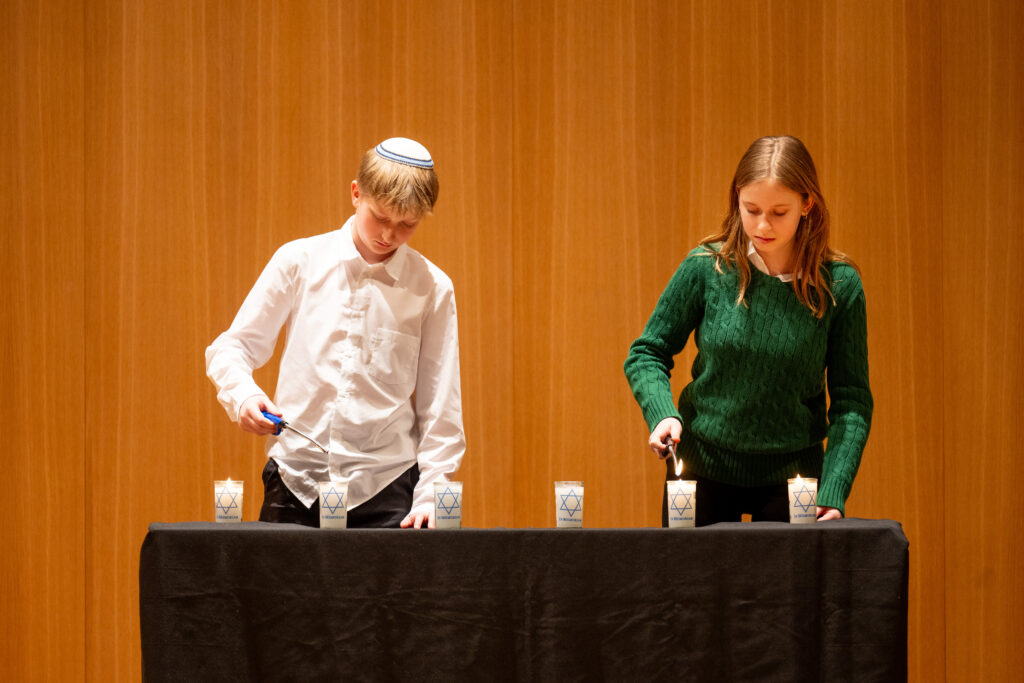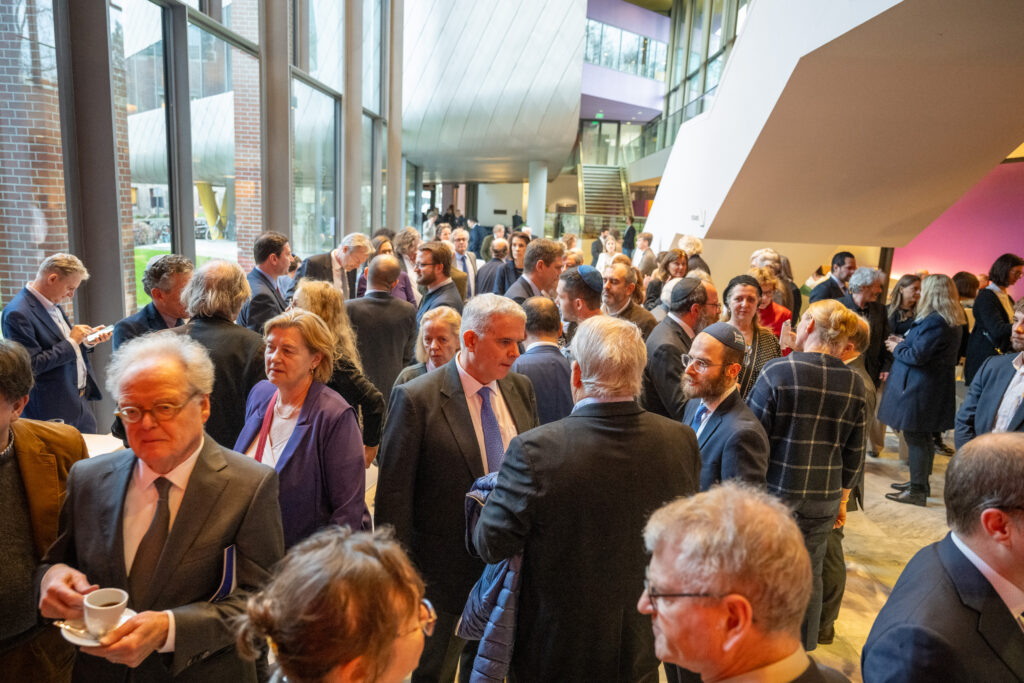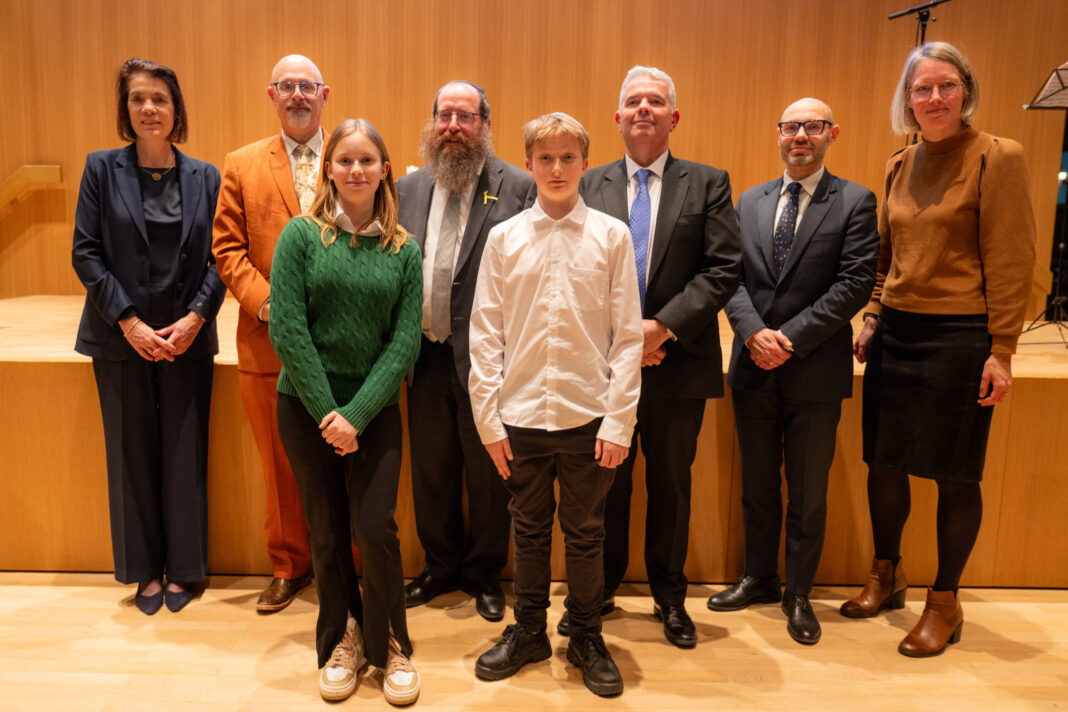By John Dunkelgrün
January 29th, 2024, marked the sixth seminar of the International Holocaust Remembrance Day The Hague.
It was held in the Academy Building of the Peace Palace, where exactly a week earlier, the International Court of Justice had given its interim verdict of a case brought by South Africa against Israel.
The keynote speaker was Professor Tom Ginsburg from the University of Chicago, who would speak on the impact of the Holocaust on International Law. The seminar also paid tribute to the life and work of Judge Thomas Buergenthal (1934-2023).
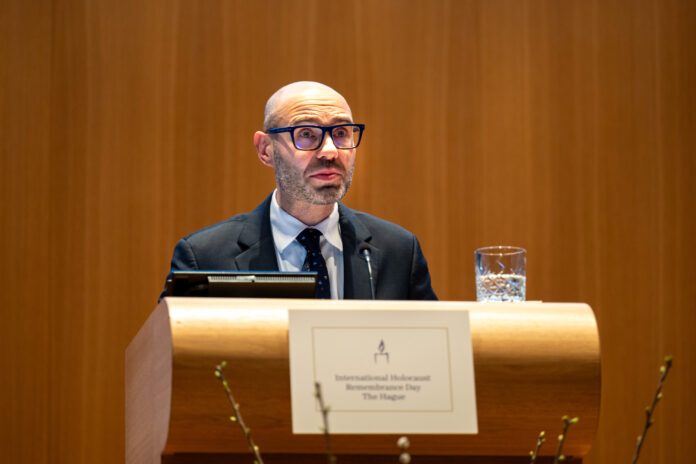
Following words of welcome by the Honorable Jan van Zanen, Mayor of The Hague, Ambassador Dr. Marcin Czepelak, Secretary-General of the Permanent Court of Arbitration, made some opening remarks.
On January 27, 1945, the soldiers of the Red Army opened the gate of the German Nazi Concentration and Extermination Camp called Auschwitz, where, in the main camp, they found about seven thousand surviving prisoners. They remained there despite the evacuation and liquidation steps performed through the middle of January 1945 because the German leadership of the camp refrained from doing anything that would make it impossible for the camp to continue functioning. This is how 7 thousand remained, while about 56 thousand other prisoners were led out of Auschwitz from January 17-21, 1945, under the escort of heavily armed SS troops. Let me quote the text prepared by the Auschwitz-Birkenau Memorial and Museum of Former German Nazi Concentration and Extermination Camp:
“Along all the routes, the escorting SS guards shot both the prisoners who tried to escape and those who were too physically exhausted to keep up with their fellow unfortunates. Thousands of corpses of the prisoners who were shot or who died of fatigue or exposure to the cold lined both the routes where they passed on foot or by train. In Upper Silesia alone, about 3 thousand evacuated prisoners died. It is estimated that at least 9 thousand, and more probably 15 thousand, Auschwitz prisoners paid with their lives for the evacuation operation. After the war, the travails of the evacuated prisoners came to be known as the “Death Marches.”
There is a mass grave in Gliwice close to where his grandparents are buried, and this was his first tangible contact with the Holocaust. The Holocaust is too big a tragedy to comprehend, and Auschwitz has become a symbol for all that terrible name represents.
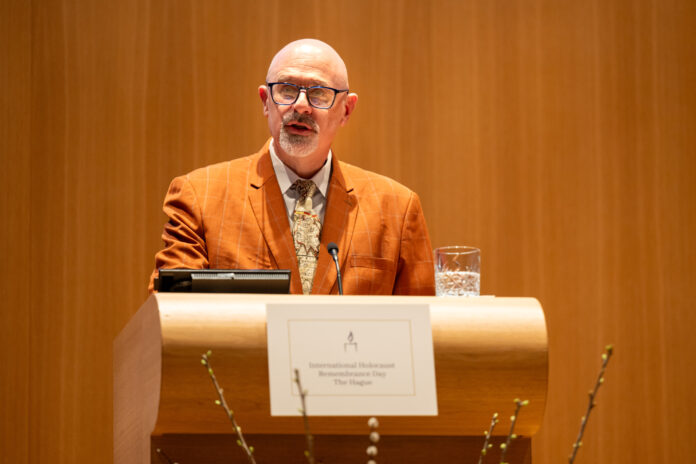
The Honorable G. Dineke De Groot, the first female President of the “Hoge Raad”, the Dutch Supreme Court, then introduced Professor Ginsburg. Following a most distinguished career in academia and as a legal advisor to the Iran-US Claims Tribunal in The Hague, he is now the Leo Spitz Distinguished Service Professor of International Law and Professor of International Science at the University of Chicago. She enumerated his more than 25 books, for several of which he won the most prestigious prizes in his field.
Professor Ginsburg’s address started by comparing Judge Buergenthal’s life and career with the development of International Law following the Holocaust. Since 1945, the Right to Life for every human being, Genocide, Crimes against Humanity, Women’s Rights, etc. have all become mainstream, and especially the Universal Declaration of Human Rights. He noted that we have just celebrated the 75th Anniversary of the UDHR!
He pointed out that initially, Human Rights were essentially national. The French declarations of 1789 applied to Frenchmen only and only those in France itself, not in the colonies. The rights of Englishmen likewise did not apply to those in its colonies. He called this particularism. Opposed to that was the work to get the ideas of Human Rights into National Constitutions, making them internationally accepted and legislated, cosmopolitanism.
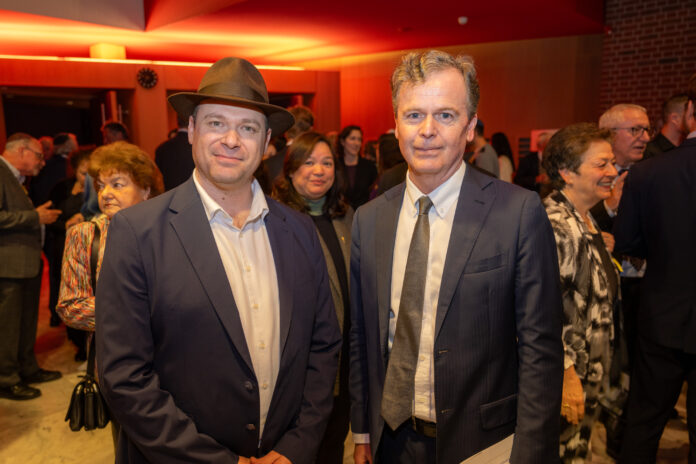
In this endeavor, he noted a group of important Jewish jurists who put these concepts into the international legal canon: Hersch Lauterpacht, Rafael Lemkin, Louis Henkin, Egon Schwelb, Jacob Robinson, and René Cassin.
Professor Ginsburg ended by showing the steadily growing number of national constitutions that include the UDHR as well as other ‘cosmopolitan’ ideas on human rights.
Dr. Karin van Leeuwen of the University of Maastricht, who has an historian’s view on the development of law, highlighted how human rights had entered Dutch law. She added Tobias Asser to the group above, who was elemental in establishing the Permanent Court of Arbitration, the first Court to settle in the Peace Palace.
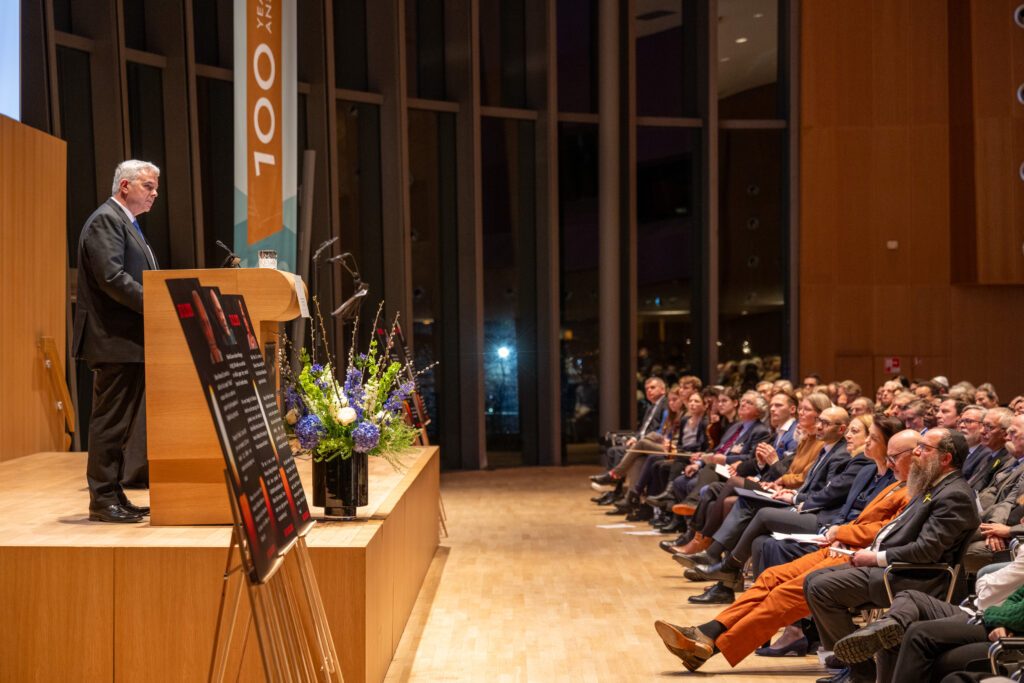
The ambassador of Israel, H.E. Modi Ephraim, stressed the importance of remembering The Holocaust, especially in the light of the Hamas atrocities on October 7th, and the subsequent worldwide rise of overt antisemitism. Livia and Gabriël Lokker, young teenage twins, then lighted six candles in honor of the six million Jews who were murdered during the Holocaust. At the same time, Naomi van Hessen and Arkady Blegherov performed brilliantly on violin and viola. The complicated ceremony was emceed like clockwork by Ms. Laura Renberg.
The formal addresses were followed by a shortened version of a documentary by the noted documentarist Nathalie Toisuta on the life and work of Judge Thomas Buergenthal. In a deeply moving series of interviews with the judge, his wife, and his sons, she showed how his survival in the camps formed him and urged him to become a human rights lawyer. His career was crowned by his appointment to the bench of the International Court of Justice.

Rabbi Smuel Katzman, the originator of the IHRD The Hague tradition, closed the evening by saying that getting Human Rights into law may have originated in a cosmopolitanism movement. Still, it had to be implemented in a particularist environment, in the national constitutions.
The seminar was attended by over 350 people, among which many VIPs and representatives of the Diplomatic Corps in The Hague, judges from the ICJ, the President of the Dutch Supreme Court, Secretary General of the PCA, MP Pieter Grinwis, and ambassadors of Israel, France, Slovenia, Kosovo, Switzerland, Rwanda, Germany, Ecuador, Canada, Australia, and South Africa.
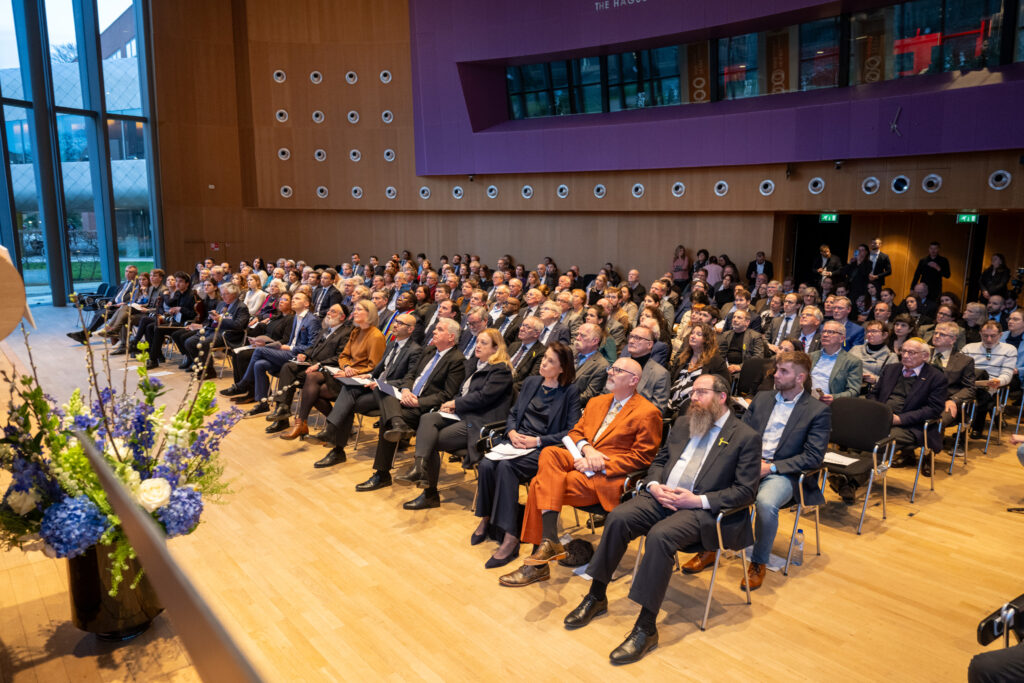
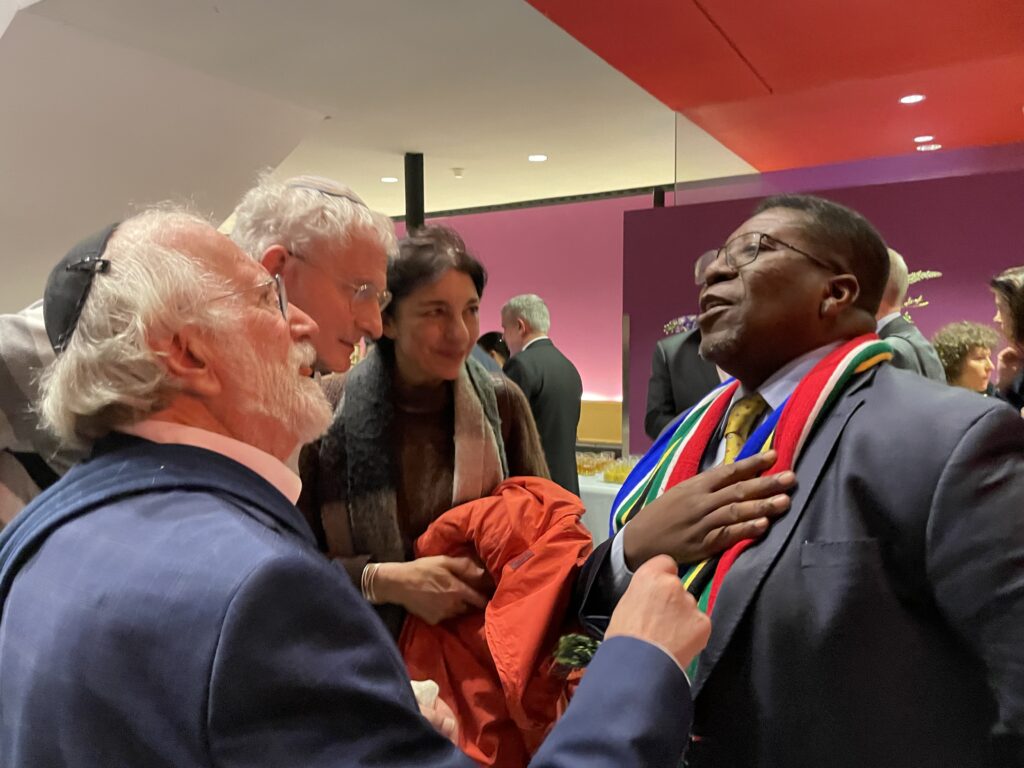
The latter, H.E. Vusi Madonsela, flaunting a large Rainbow-Nation’s scarf, got into a very lively discussion with Rabbi Awraham Soetendorp. When your correspondent asked him what he would suggest when a deadly enemy who has sworn to annihilate you hides among civilians, he answered, “Don’t shoot”. What he would do, he wouldn’t say.
